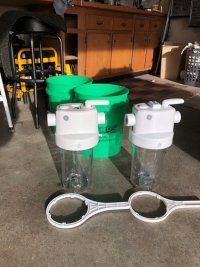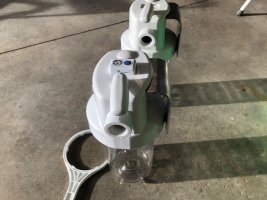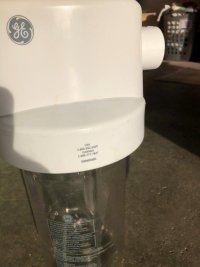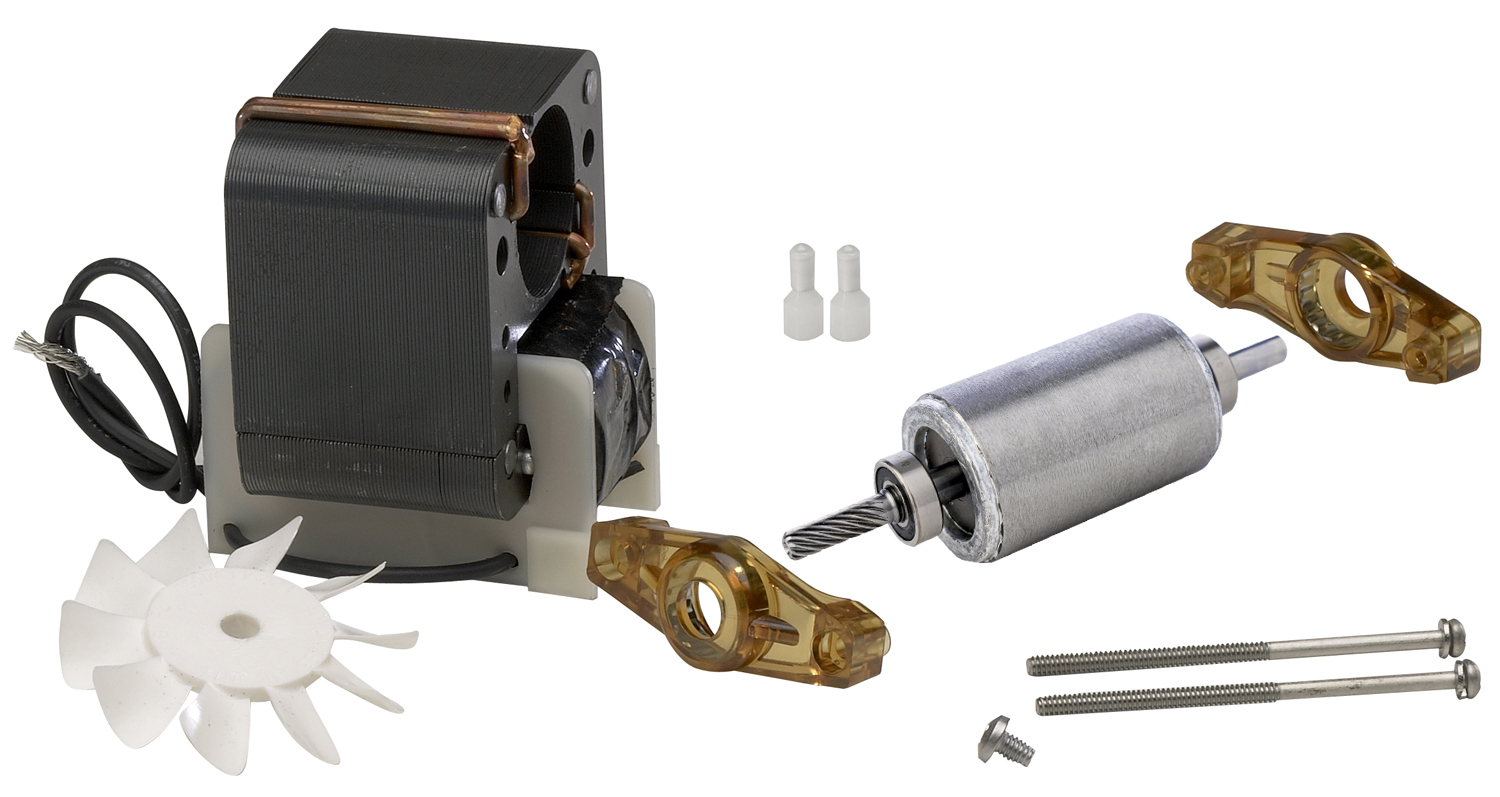Thanks for the links and info on the filter housing materials. I think that for now I will buy the blue one with the drain made into it.
As to the 300' of 3/4" pipe. That is buried in the ground from the house to the well.
The company that drilled the well, the father died and they are having trouble sorting out paper work. He did say that the average in this area is 180' deep but a neighbor across the street has a 100' deep well.
My pump is a 1/2 hp with a 3/4" drop pipe and the casing is 5" PVC.
So there is a 300' run of 3/4 pvc from the well to the house with the well being slightly higher then the house. Then one would need to add what ever the length of the drop pipe is.
How do I know the drop pipe is 3/4?
The white PVC is 3/4" and there is a grey colored barbed fitting that is screwed into the white 3/4 pvc female fitting.
Just thinking why they might have used a 3/4" drop pipe besides cheaper.. If one uses a 3/4' drop pipe on a 1/2 HP pump, could they get a little more depth because the pump would not have to push a so much weight up to the top?

-



Much cleaner up there now and there is a union that can be loosened and the pump lifted up. If I could find the exact union that was used then perhaps I could make a hose adapter on the female side of the union. Raise the pump and prop it up with 2x4 boards under the well seal and be able to drop a hose down in the well to flood it with?
Could I run a hose directly off of the outlet side of the pump to use for flooding the well?
Maybe one of you guys know what that grey union is. I have never seen a grey PVC union before.
Also if youlook at the chain, that is a fairly thick chain as it fills the hole in the well cap.
Is there a 6" well casing? Notice the cap is a bit small for the pipe.

Thanks
Charrie
As to the 300' of 3/4" pipe. That is buried in the ground from the house to the well.
The company that drilled the well, the father died and they are having trouble sorting out paper work. He did say that the average in this area is 180' deep but a neighbor across the street has a 100' deep well.
My pump is a 1/2 hp with a 3/4" drop pipe and the casing is 5" PVC.
So there is a 300' run of 3/4 pvc from the well to the house with the well being slightly higher then the house. Then one would need to add what ever the length of the drop pipe is.
How do I know the drop pipe is 3/4?
The white PVC is 3/4" and there is a grey colored barbed fitting that is screwed into the white 3/4 pvc female fitting.
Just thinking why they might have used a 3/4" drop pipe besides cheaper.. If one uses a 3/4' drop pipe on a 1/2 HP pump, could they get a little more depth because the pump would not have to push a so much weight up to the top?
-
Much cleaner up there now and there is a union that can be loosened and the pump lifted up. If I could find the exact union that was used then perhaps I could make a hose adapter on the female side of the union. Raise the pump and prop it up with 2x4 boards under the well seal and be able to drop a hose down in the well to flood it with?
Could I run a hose directly off of the outlet side of the pump to use for flooding the well?
Maybe one of you guys know what that grey union is. I have never seen a grey PVC union before.
Also if youlook at the chain, that is a fairly thick chain as it fills the hole in the well cap.
Is there a 6" well casing? Notice the cap is a bit small for the pipe.
Thanks
Charrie
Last edited:







